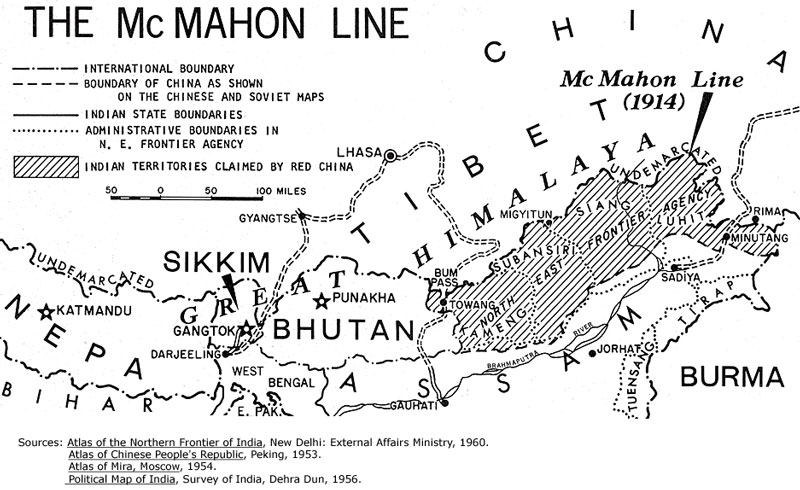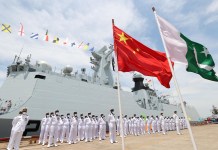When the war broke out between China and India in 1962, the former declared a unilateral ceasefire after 32 days of fighting on November 21, and its army returned behind the McMahon Line. If China wanted, it could have continued to occupy the territory it had gained after capturing almost half of Arunachal Pradesh, but it didn’t.
After Homegrown Versions Of Twitter & WhatsApp, India To Roll Out Alternative To Google Maps
While Beijing is always emphatic about its claim on Arunachal Pradesh, terming it as ‘South Tibet’, why did it retreat from the region during the 1962 war? The strategic experts are still scratching their heads at what prompted the Chinese to withdraw when there was no apparent threat to their occupation at the time.
China has repeatedly objected to the visits of Indian Prime Ministers to the state, including one of the visits of Manmohan Singh in 2009. When Narendra Modi became the PM, he visited Arunachal Pradesh in the same year and he too faced Chinese backlash for his visit. Whether it’s the exiled Tibetan leader, the Dalai Lama, or any Indian leader, China doesn’t like anyone touring what it calls a part of its South Tibet.
According to Harsh Pant, head of the department of strategic affairs at the Delhi-based Observer Research Foundation (ORF), the biggest problem was the apparent absence of the McMahon line. He told BBC, “China wants to keep the issue afloat by raising the matter at the diplomatic level, but it never wants to keep active control over it.”

The reason for this, according to Pant, is that the people of Arunachal have never been seen standing with China.
In the year 1914, when there was British rule in India, an agreement was reached in Shimla between the then governments of India and Tibet. The agreement was signed by Sir Henry McMahon, an administrator in the British government and representative of the then Government of Tibet. In what is called the ‘Simla Accord’, McMahon proposed the line to separate Tibet from India in the eastern sector. This line was not accepted by China since it did not consider Tibet a sovereign government capable of signing treaties.
India gained independence in 1947, while the People’s Republic of China came into existence in 1949. But China continues to reject the Simla Agreement saying that it has the right over Tibet and will not accept the agreement signed by any representative of the Tibetan government.
But in India, the map showing the McMahon line was first officially published in 1938 by the British rulers while the North-East Frontier Agency (NEFA) came into existence only in 1954. Although China did not show much aggression when it came to Arunachal Pradesh, experts say that in 1986, the Indian Army saw permanent buildings built by the Chinese army near Sumdorong Chu in Tawang, Arunachal Pradesh.

As a result, the Indian Army also started building installations near the area around Hathung La. The development had brought the two countries close to a war at the time, which was then averted when India’s foreign minister Narayan Datt Tiwari visited Beijing, after which a flag meeting was held between the armies of the two countries. Although China kept building up tensions in the region in successive years through repeated provocations.
Other experts and military historians have presented a different perspective of what prompted the Chinese to withdraw during the 1962 escalation. According to one expert, due to the international pressure at the time, with India receiving assurances of support from both the US and the British imperialists through arms supply, China had to rethink its decision.
And with the winter setting in rapidly and, given the PLA’s extended and tenuous supply line, it would have been extremely difficult to maintain troops across and far south of the McMahon Line, he contends.
The Chinese forces would be in a dangerous situation with the supplies cut off due to the upcoming snowfall in the region at a place where India could amass a large number of troops in a quick span of time.
However, Bérénice Guyot-Réchard, who teaches history at the King’s College London, has a different take on the subject. She writes in The Hindu, “There is much evidence that the PRC’s occupation of northern NEFA was a sort of public relations exercise vis-à-vis local people.”
Contending that neither China nor India had a significant hold over the hearts and minds of the people of NEFA at the time, both were vying to impress them with good governance and a prosperous future.
“Chinese troops had brought in gifts and exotic goods and made every effort to convince people that their religion, customs, and freedom would be respected. In fact, China had one key message for the people of NEFA: it was there to liberate them from India,” she writes.
Bérénice has also written a book titled, Shadow States: India, China and the Himalayas, 1910-1962, which chronicles the history of the tumultuous region for the most part of the 20th century.
She concludes her piece by saying the war was not just about winning more territory (in the Aksai Chin) or teaching India a lesson (which it did). “It was also about winning over hearts and minds. And if the PRC did win the war, on that front it also lost the peace.”
The natives of NEFA (the present-day Arunachal Pradesh) were unimpressed by the Chinese overtures and chose to stay with India instead after hearing how China had treated the people in Tibet, a country with which they shared a deep connection.




